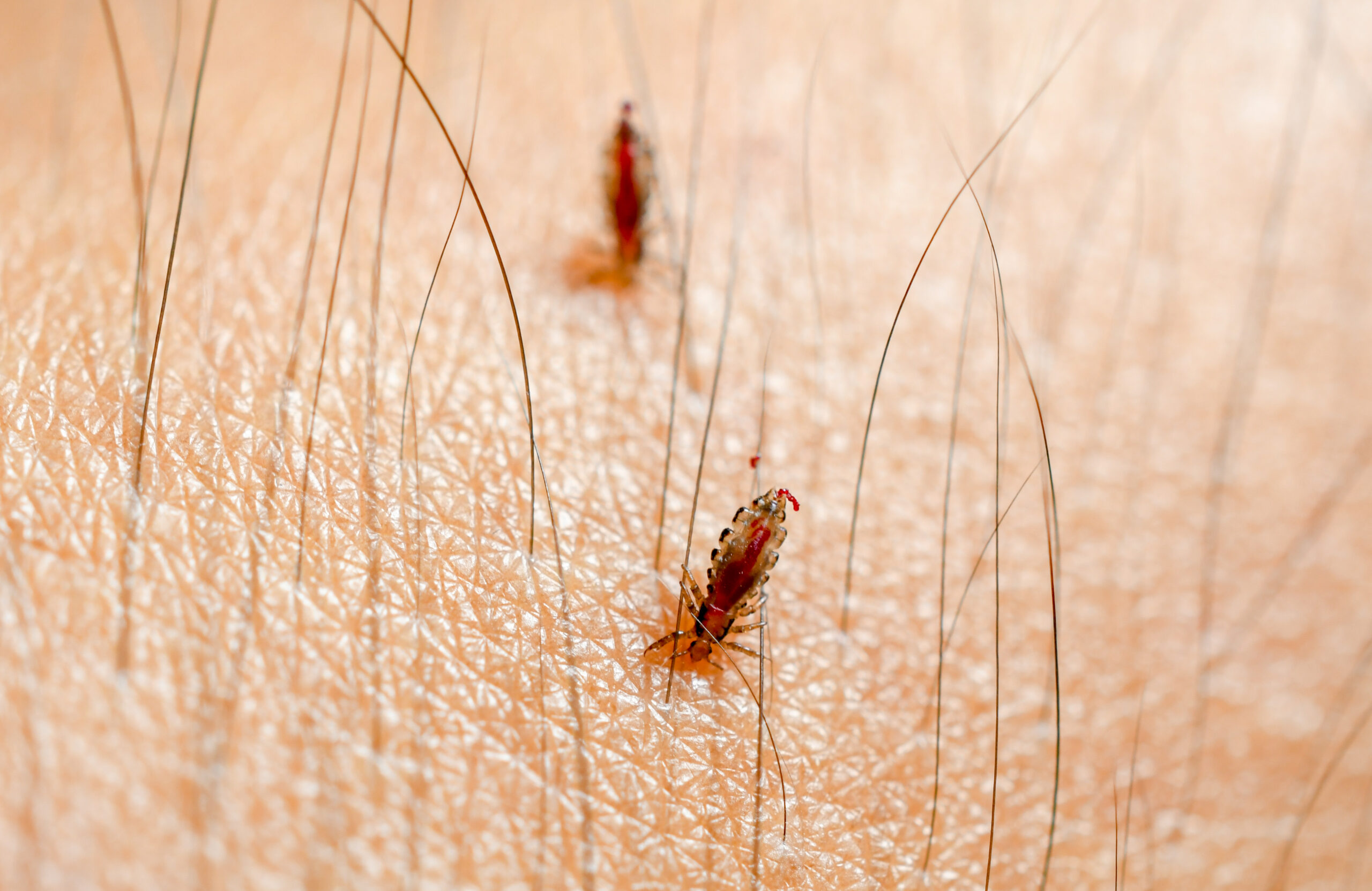Searching for Food
When a head louse needs to feed, it moves close to the scalp, where it searches for a suitable vein. Their small size and flat body allow them to navigate through the hair easily, giving them quick access to the skin. Head lice have sensory structures on their antennae that help them detect warmth and chemical cues, allowing them to locate blood vessels efficiently. Once a suitable spot is found, the louse uses its specialized mouthparts to pierce the skin and begin feeding.
The Feeding Mechanism
A head louse’s mouth is equipped with needle-like stylets designed to puncture the skin. Once it finds a suitable feeding site, the louse inserts these stylets into the skin and reaches a blood vessel. At the same time, it releases saliva into the wound. This saliva contains anticoagulants that prevent the blood from clotting, ensuring a steady flow of blood for the louse to consume.
The feeding process is powered by two small pumps located in the louse’s head, which work to draw the blood through its mouthparts and into its digestive system. These pumps function in a manner similar to a heart, rhythmically contracting to pull blood into the louse’s body. Because head lice are partly transparent, this process can sometimes be observed under a microscope, with the thin stream of blood visible as it moves from the mouth, through the head, and into the gut.
Feeding Frequency
Unlike body lice, which can survive for extended periods between meals, head lice need to feed frequently to survive. While the exact frequency is still debated, it’s believed that head lice need to feed at least six times within a 24-hour period. Studies have shown that lice feeding only four times in 24 hours will die within a few days, indicating that they require a higher frequency of meals to sustain themselves.
This frequent need for food is a key reason why head lice rarely leave their host. They are entirely dependent on their human host for blood and cannot survive for long without regular access to it. As a result, head lice are well-adapted to clinging to the hair and scalp, where they have consistent access to their food source. This reliance on frequent blood meals explains why head lice infestations persist until treated, as lice will remain on the scalp indefinitely without intervention.
Impact of Feeding on the Host
Although head lice bites are small, the saliva they inject can cause irritation and allergic reactions in some individuals. The itching that results from lice infestations is primarily due to an immune response to the louse saliva. In more severe cases, frequent scratching can lead to secondary infections if the skin becomes broken or damaged. While head lice do not transmit diseases like body lice, their presence can still cause significant discomfort and distress.
Short life without food
Head lice have evolved a specialized feeding mechanism that allows them to thrive as parasites on the human scalp. Their need for frequent blood meals ties them closely to their host, ensuring they never stray far from the hair and scalp. Understanding how head lice feed is crucial for managing infestations, as it highlights why these pests are so persistent and difficult to eliminate without effective treatment. Frequent feeding is essential for their survival, and without a constant food supply, head lice cannot live for long.

